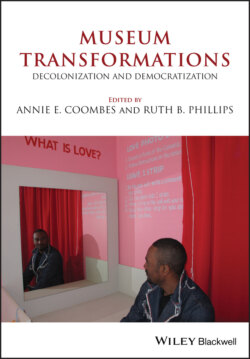Читать книгу Museum Transformations - Группа авторов - Страница 58
Collecting and recollecting
ОглавлениеIn 1990 the Dalai Lama invited a delegation of rabbis to visit Dharamsala.18 In the course of their week-long dialogue, a rabbi described the first-century history of Jerusalem under the Romans leading to the destruction of their Temple and exile of the Jews. Unable to sacrifice at the Temple any more, the religious leaders chose not to build a substitute shrine where sacrifices could take place. Instead they reinvented their rituals in ways that would remind the community of its loss. As a member of the delegation observed, “The memory of the Temple was never lost … but it was turned into literature … The rabbis declared that reading about Temple laws was now the equivalent of Temple service” (Kamenetz 1994, 96).
The Tibetan response to exile has been different. As Lydia Aran observes in her study of Tibetan exilic representations of the past, the Tibetans “went into exile with their high priest, and under his leadership, have channelled their energy not into inventing the means to make their religion viable under the new circumstances, but into replicating in the Diaspora their ancient religious infrastructure, rituals, and institutions” (2005, 210). By rebuilding their Temple in exile, as it were, the Tibetan community has focused on being “the custodian of the Tibetan cultural identity, not a carrier of the memory of its destruction” (198). This has oriented the community toward the future – rebuilding monasteries, reconstructing traditions for tomorrow. As Jews, impelled by their own tradition of aniconism, eschew material relics to focus on the power of recollection, Tibetans attempt to make collections of the physical fragments of their past, and use them to somehow piece together a whole. Material remnants are overwhelmingly important in this effort, and any quarter that helps preserve them is seen as an ally. This would explain why the Dalai Lama so often blesses Western museums that have collections of Tibetan art.
In her essay, Aran carefully analyzes the Dalai Lama’s speeches and writings and finds that his most vivid description of the suffering of Tibetan people occurred in the very first book that he wrote shortly after fleeing from Tibet.19 In later utterances, the Dalai Lama dwells not on the tortures or deaths of the Tibetan people, but on the destruction of Tibetan religion and culture. Why is the Dalai Lama reticent about recounting human suffering, and why does he foreground the destruction of monasteries and icons instead? According to Aran, this choice is oriented precisely to counter the Chinese project. Despite the massive loss of life in Tibet since the Occupation, she asserts that the Chinese did not intend the genocide of the Tibetan people. Rather, China’s desire has been to rob Tibet of its identity, first through violent means, and now through the Sinicization of the populace. The Dalai Lama is countering the Chinese erasure of Tibetan uniqueness by preserving Tibetan culture in exile.
But Aran offers a more important explanation for the Dalai Lama’s reluctance to dwell on the suffering of Tibetans. As a Buddhist monk, and as one who is traditionally held to be the reincarnation of the Bodhisattva of Compassion, the Dalai Lama’s spiritual commitment is toward all human beings – even the Chinese.20 To memorialize the Tibetan tragedy in ways that would keep alive a sense of anger and injustice would run counter to this ethical imperative. Inevitably, the Dalai Lama directs attention toward a positive project of a possible reconstruction, rather than a more fraught remembrance of lives that have been irrevocably lost.
In this context, a project like the Tibet Museum, with its focus on human suffering and loss, appears anomalous. Indeed in the memory projects of the Tibetan government-in-exile it will likely remain a singular instance, a reminder of a road ventured on, but eventually not taken by the official establishment of Dharamsala.
